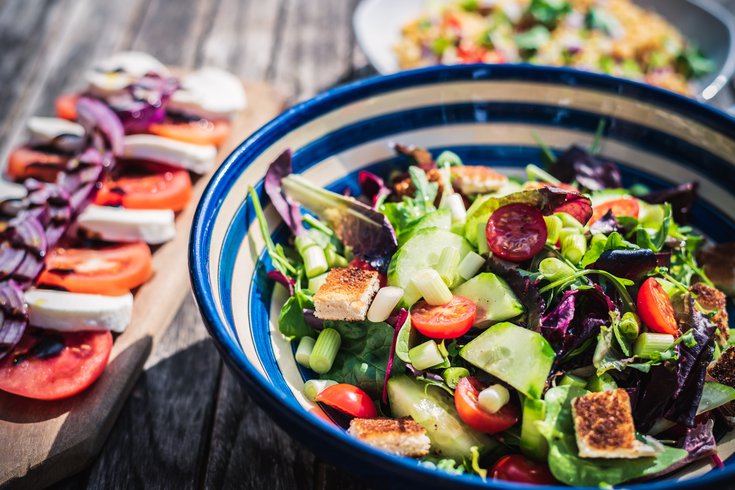
Research suggests that between twenty-three percent and thirty percent of life expectancy are genetic. The rest is a mix of lifestyle and genes. The average person's life expectancy has not changed in decades despite the fact that there is an increase in the years people live. There are many factors that affect the life span of a person. Healthy eating habits and regular exercise are important.
Genetics is still in the early stages of research, but it has been proven that higher lifespan can be linked with nutritional requirements. The study also revealed that 25 percent of variance in human life span is genetic, and that many genes are involved in aging. While not completely understood, three genes have been linked with longevity. These genes include the APOE and FOXO3 genes, as well as the CETP gene. These genes are not known to have an impact on one's life expectancy, but they do interact.

The average American life expectancy is around 80-80 years. Asian-Americans, by contrast, average almost one hundred years longer. Black Americans have the lowest average lifespans but have poorer overall health. Men also have higher rates of diabetes, heart disease, and cancer than their white counterparts. Although women generally live longer than their male counterparts, There are many theories that explain why women live longer than men, but they all have to do with better health and fewer physical activities.
The determinants of life span may not be genetic, but lifestyle factors play a significant role. A person's lifestyle, including the type of food and environment they live in, has a major impact on their life expectancy. During the first seven decades of life, lifestyle is a much more significant factor in determining the length of life than genetics. As people age, they are more likely to be healthy and avoid many age-related diseases.
The length of life span is influenced by genetics, environment, and lifestyle. People who live longer than their peers are healthier. How long they live depends on their environment and how they live it. Their longevity can also be affected by the nutrition and lifestyle of people who live in poorer places. These factors are crucial, but they do not always have to be causal. Healthy eating habits are key to prolonging your life. Those who eat a lot of fresh fruit and vegetables are also more likely to live longer.

Scientists have observed people living into their nineties and nineties. They have the same lifestyles as those who live in their nineties and thirties. They don't smoke, they're not overweight, and they have no medical conditions. However, they are more likely to be non-smokers. They are also able to cope with stress. They are also more likely female. And it's important to note that healthy older adults are more likely to live longer than their counterparts.
FAQ
Can I go to a gym 7 days per week?
Yes, you could go to the gym seven days per semaine but not all at one time. You must find a time you can do it without feeling exhausted and depleted.
This will keep you motivated and provide energy for other activities.
You must also ensure that you eat enough during these times. This will ensure you don’t feel tired and sluggish going to the gym.
Last, make sure there aren't any other things competing with your time. It is possible to skip exercising on school nights if your children are involved.
Is weightlifting more effective at burning fat?
Although weight lifting can help you lose fat more quickly, it is best to combine it with cardio exercises.
You should do weightlifting after your cardio workouts to maximize its benefits.
If done correctly, weightlifting can increase your heart rate and oxygen intake which in turn helps you lose weight.
You will not notice any changes in your body composition if you don’t combine it and cardio.
Why Metabolic Well-being is the Key to Aging Well
People are living longer today than ever. However, as they age, so do their chances of getting sicker. Despite making great progress in medical science, it is becoming more apparent that our current approach to medicine is not working.
We must change the way that we look at health and aging. To achieve healthy aging, we must look at metabolic health as more than just weight loss. It is also important to consider overall wellness.
To live a full and active life, your metabolism should be healthy all your life.
There are many ways you can improve your metabolic health. One of those ways is to incorporate these 7 foods into your diet:
-
Blueberries contain resveratrol, which has been shown to help support cellular longevity. They also contain antioxidants and vitamins C & E.
-
Beans such as pinto beans and lentils provide excellent fiber and plant protein. These nutrients help keep blood sugar levels steady so they won't spike and crash.
-
Broccoli is rich in sulforaphane. Studies have shown that it protects cells from DNA damage. It might even slow down the progression of cancer.
-
Chia seeds are rich in fiber and omega-3 fatty acid. They're also loaded with antioxidants and protein. These nutrients promote gut health, brain function and heart health.
-
Green Tea contains polyphenols called catechins. Studies have shown that green tea contains catechins which are linked to lower bone fractures and cardiovascular disease. They also reduce cognitive decline and diabetes risk.
-
Salmonis a great source of lean protein. It is low in saturated fat and high in vitamin D.
-
Walnuts contain omega-3s and antioxidants like alpha lipoic acid (ALA). ALA protects against inflammation and boosts energy production.
Is it true that kidney stones can be caused by overeating protein?
Protein helps maintain healthy bones and tissue. However, too much protein can result in calcium excretion through the urine. In turn, this can result in kidney stones.
It is important to keep in mind that not everyone will develop kidney stones if they consume more protein than 2 grams per kilogram (2.2lbs). Some people can eat high amounts of protein without getting kidney stones.
By watching how much sodium you consume, kidney stones can be prevented. Sodium regulates the body's water balance. Too much sodium can lead to kidney stones.
You may also want to reduce your protein intake in the event of kidney stones. For most people, protein provides half their daily caloric requirements. Reduce your intake of protein and you will likely lose weight.
If you do decide to eat more protein, don't go overboard. Do not eat more than 20% of your daily calories from protein.
How many calories should you consume each day?
It varies from one person to another. On average, you need 2000 to 2500 calories per days. It is important to consider your lifestyle and determine how many calories you'll need.
Is Cardio Better Than Strength Training?
Both are equally beneficial. Cardio is better if you are looking to build muscle faster.
Cardio burns more calories in a minute than strength training and more fat.
Strength training is a great way to build muscle mass. However, it takes more effort than cardio.
What is the best work out for men aged 40+?
The best workout for older men usually increases energy and stamina.
It is important to remember that most people over 40 experience a decline in testosterone, leading to lower sex drive.
This doesn't mean that you shouldn't still engage in physical activity. Numerous studies have shown that aerobic exercise can increase testosterone levels in certain men.
An aerobics routine is a great way to increase your sexual performance.
Statistics
- Are You One of the 20% of Guys (mh.co.za)
- Get free shipping and 25% off today. (healthline.com)
- According to the American Heart Association, blood pressure should be checked at least once every two years, beginning at age 20. (my.clevelandclinic.org)
- By John Thompson Take a whopping 38% off a set of PowerBlock Pros. (menshealth.com)
- Cardmembers earn 5% Back at Amazon.com with a Prime Credit Card. (amazon.com)
External Links
How To
How can a man get fit in 30 days?
The best way to achieve fitness goals is by breaking them into small achievable steps.
You need to make sure you are working towards the goal each day. This could include anything from 10 pushups that last 5 minutes to running 3km.
Positive results will be achieved if you do this consistently over time.
Consistency is the key here. You must keep going until you succeed.
What's the difference between Aerobic Fitness & Anaerobic Fitness, and how can you tell?
Anaerobic fitness means that our bodies can perform intense physical work with no oxygen. Anaerobic pathways can be used to supply enough energy during high-intensity exercise. Anaerobic pathways can include glycolysis, creatinephosphate, the Phosphagen, and lactic acids.
Aerobic fitness, however, refers to the continuous practice of low-intensity aerobic exercise. The primary source of energy for aerobic exercise is oxygen. In other words: The aerobic pathway gives more energy than that of the anaerobic.
If you are looking to run a full marathon, then you have to increase your aerobic ability. If you concentrate on building your anaerobic capability, you won’t be able complete the race.
Aerobic fitness can also be called cardiovascular fitness. The two most commonly used methods of measuring cardiovascular fitness, are VO2 Max testing and step tests.
Tests for VO2 Max
The body's maximum oxygen consumption during exercise is called the VO2 Max. This test measures the body's ability to use O2 while exercising.
This is the best test to assess cardiovascular fitness. It requires expensive equipment and highly-trained professionals to administer.
Step Tests
Step tests are an easy but powerful way to determine your cardiovascular fitness. Based on your age and weight, they involve running or walking on a track or treadmill for a specified time.
These tests are simple to perform, cost-effective, and easily accessible from almost any location. For instance, you can walk on a treadmill for 2 minutes, rest for 1 minute, repeat this process for 20 minutes, and then stop. You should maintain a constant heart rate throughout the session.
This is the "Bruce Protocol". Bruce was himself a runner and developed the protocol after realizing his heart rate wouldn't increase when he ran for longer distances.